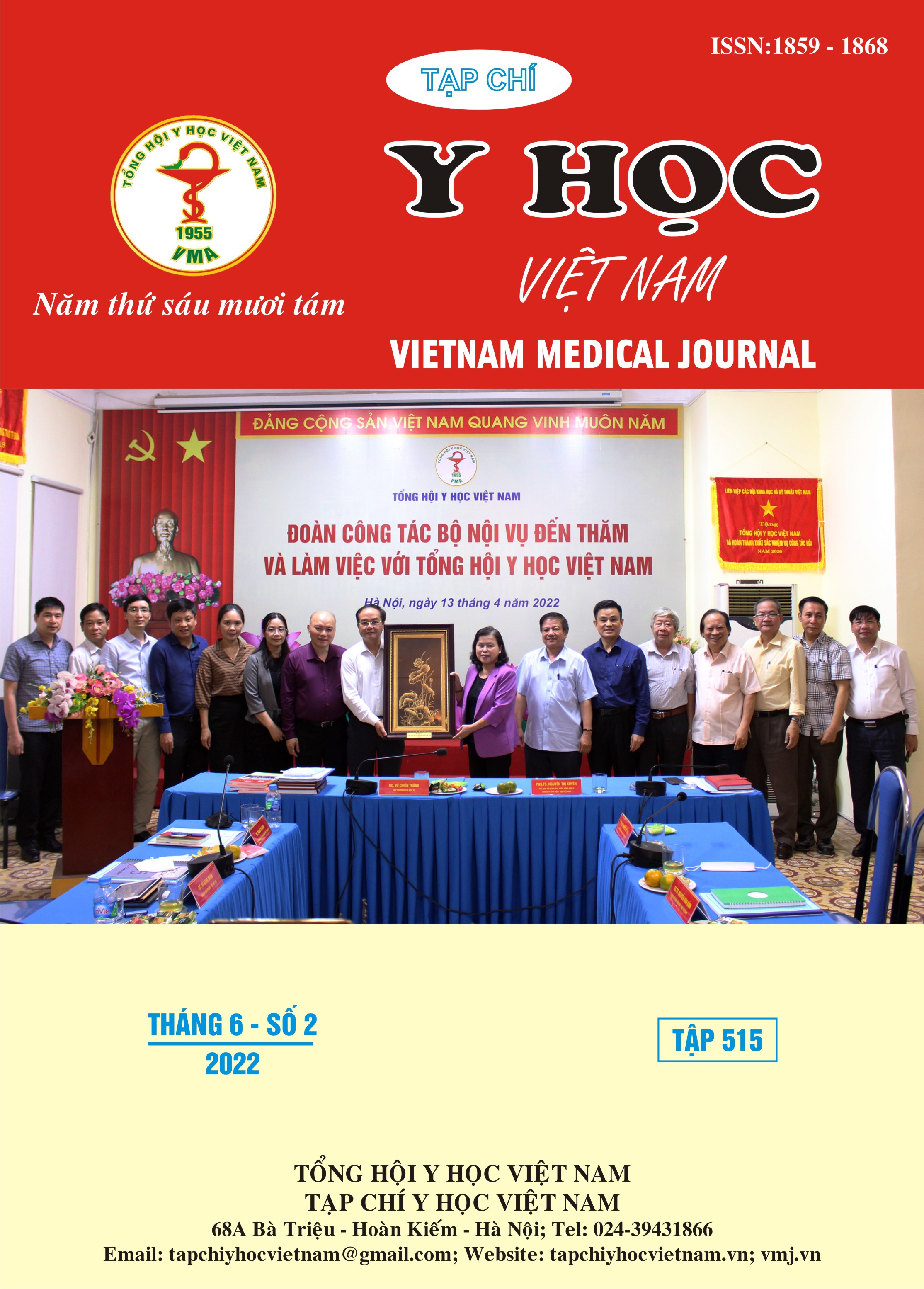CLINICAL FEATURES OF CEREBRAL VENOUS THROMBOSIS
Main Article Content
Abstract
Objective:To describe clinical features of cerebral venous thrombosis. Subjects and methods: A prospective, descriptive study of 38 patients with cerebral venous thrombosistreated at the Department of Neurology, Bach Mai Hospital from March 2020 to June 2021. Results: The mean age was 42.4 ± 14.8, the male/female ratio was 1.2:1. The acute onset was seen in 6 patients (15.8%), subacute in 31 (81.6%) and chronic in 1 (2.6%). The main symptom was headache (94.7%), hemiparesis (34.2%) and seizure (28.9%), disorder of consciousness (15.8%). The clinical scenario is various, in which the most common manifestation is headache with vomiting - nausea accounting for 68.4%; headache associated with hemiplegia, convulsions, and disturbances of consciousness, respectively, 39.5%; 31.6% and 28.9%. We found 60.5% without motor paralysis; 39.5% of the patients had motor paralysis, in which the most common was grade 3 and grade 4, accounting for 10.5%. Conclusions: Clinical symptoms was varied and non-specific, the main symptom was headache (94.7%), hemiparesis (34.2%) and seizure (28.9%), disorder of consciousness (15.8%). The most common manifestation was headache combined with vomiting - nausea accounting for 68.4%; headache associated with hemiplegia, convulsions, and disturbances of consciousness, respectively, with the rate of 39.5%; 31.6% and 28.9%.
Article Details
Keywords
Cerebral venous thrombosis, clinical features
References
2. P. C, Ferro J. M., Lindgren A. G., et al. Causes and Predictors of Death in Cerebral Venous Thrombosis. Stroke. 2005;36:1720-1725.
3. Coutinho JM, Ferro JM, Canhao P, et al. Cerebral venous and sinus thrombosis in women. Stroke. 2009;40(7):2356-2361.
4. Lê Văn Thính. Nhận xét một số đặc điểm lâm sàng, cận lâm sàng và điều trị huyết khối tĩnh mạch não. Tập san Hội Thần kinh học Việt Nam, 2, 10. 2010;
5. Trịnh Tiến Lực. Nghiên cứu đặc điểm lâm sàng và hình ảnh học của bệnh nhân huyết khối tĩnh mạch não Luận án Tiến sỹ y học, Đại học Y hà nội. 2020;
6. Lê Văn Minh. Nghiên cứu đặc điểm lâm sàng, hình ảnh não, một số yếu tố nguy cơ và giá trị của D-Dimer trong chẩn đoán huyết khối tính mạch não. Luận án Tiến sỹ Y học, Học viện Quân Y2014.
7. Ferro JM, Coutinho JM, Dentali F, et al. Safety and efficacy of dabigatran etexilate vs dose-adjusted warfarin in patients with cerebral venous thrombosis: a randomized clinical trial. JAMA Neurology. 2019;76(12):1457-1465.
8. Duman T, Uluduz D, Midi I, et al. A multicenter study of 1144 patients with cerebral venous thrombosis: the VENOST study. Journal of Stroke and Cerebrovascular Diseases. 2017;26(8):1848-1857.


